Lathe machines are essential in manufacturing and woodworking, allowing precision shaping and cutting of materials. One of the key components of a lathe machine is the center, which supports the piece being worked on.
However, two types of centers are commonly handy in lathe machines: the dead center and the live center. While both play crucial roles in the functioning of a lathe machine, they serve different purposes and have distinct characteristics.
Here, we will delve into the differences between the lathe dead center and live center and how they contribute to the overall performance of a lathe machine. So, let’s take a closer look at the dead and live centers and discover their unique functions in the world of lathe machines.
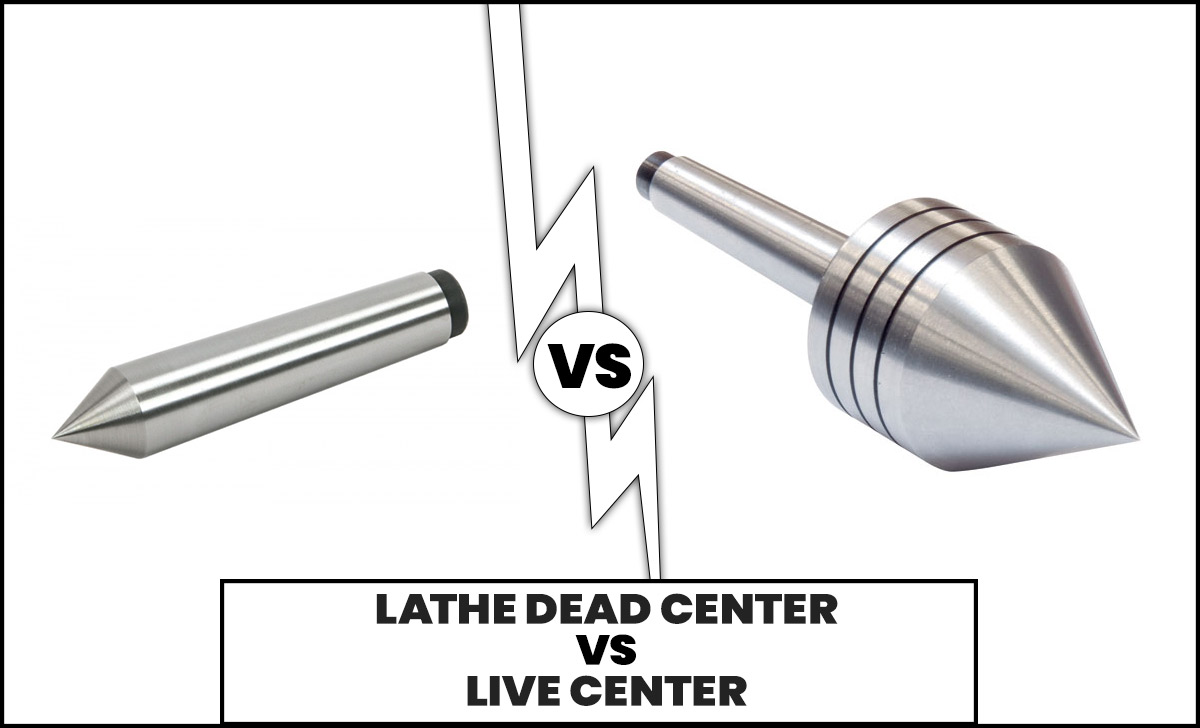
Definition And Purpose Of A Lathe Dead Center
The lathe operator uses a lathe dead center, an indispensable tool in lathe operations that supports and facilitates accurate machining. Typically mounted in the lathe’s tailstock, this pointed and hardened steel center serves as a fixed reference point for the rotation of the workpiece.
Its primary function is to provide stability and prevent deflection, especially when working with long and slender workpieces, ensuring reliable support throughout the machining process. Moreover, the dead center aids in maintaining concentricity, resulting in highly precise and consistent results. Acting as a pivot point, it enables smooth and even rotation of the workpiece, further enhancing the overall quality and precision of the turned components.
Definition And Purpose Of A Lathe Live Center
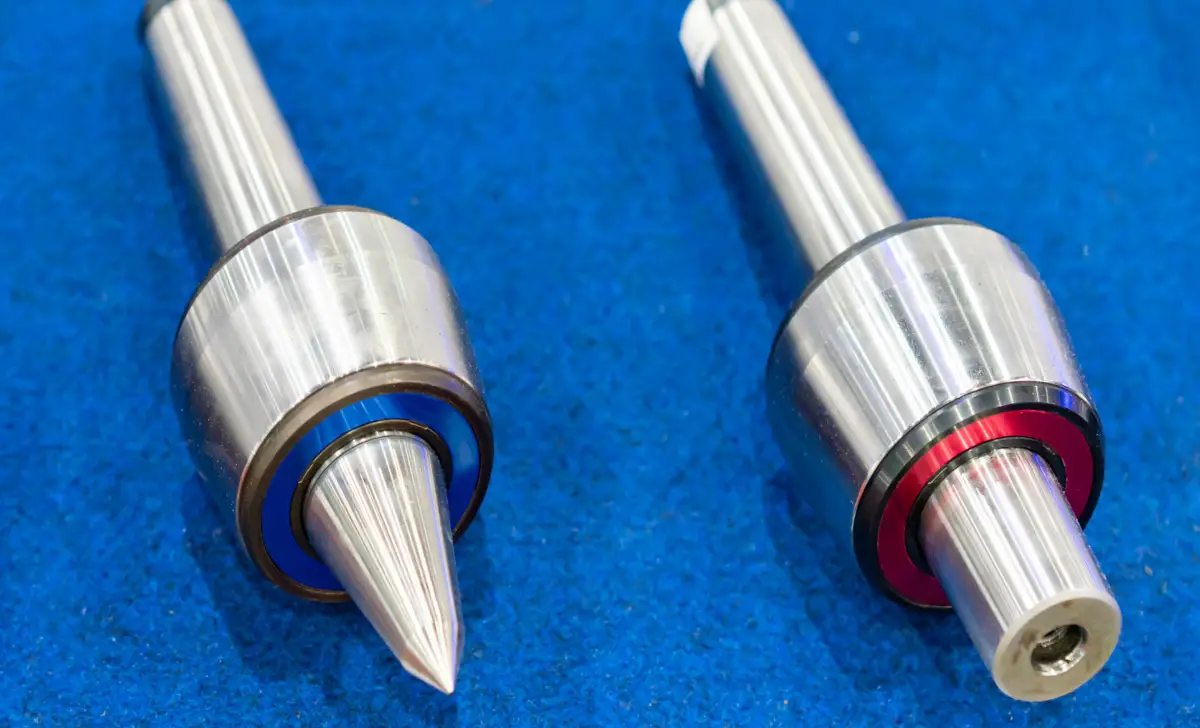
A lathe live center is handy in lathe operations to support the workpiece during machining. It has specific designs to rotate with the workpiece, providing stability and reducing vibrations. We insert the live center into the lathe’s tailstock, which consists of a spindle with bearings that allow it to spin freely. Its purpose is to ensure accurate alignment, facilitate smooth rotation, and prevent deflection of the workpiece.
The advantages of using a live center include improved precision, reduced chatter, and enhanced surface finish. However, it is important to note that live centers have limitations, such as limited load capacity and potential heat generation during prolonged use. Understanding the capabilities and limitations of a lathe live center is essential for achieving optimal results in lathe operations.
Key Differences Between Lathe Dead Center Vs Live Center
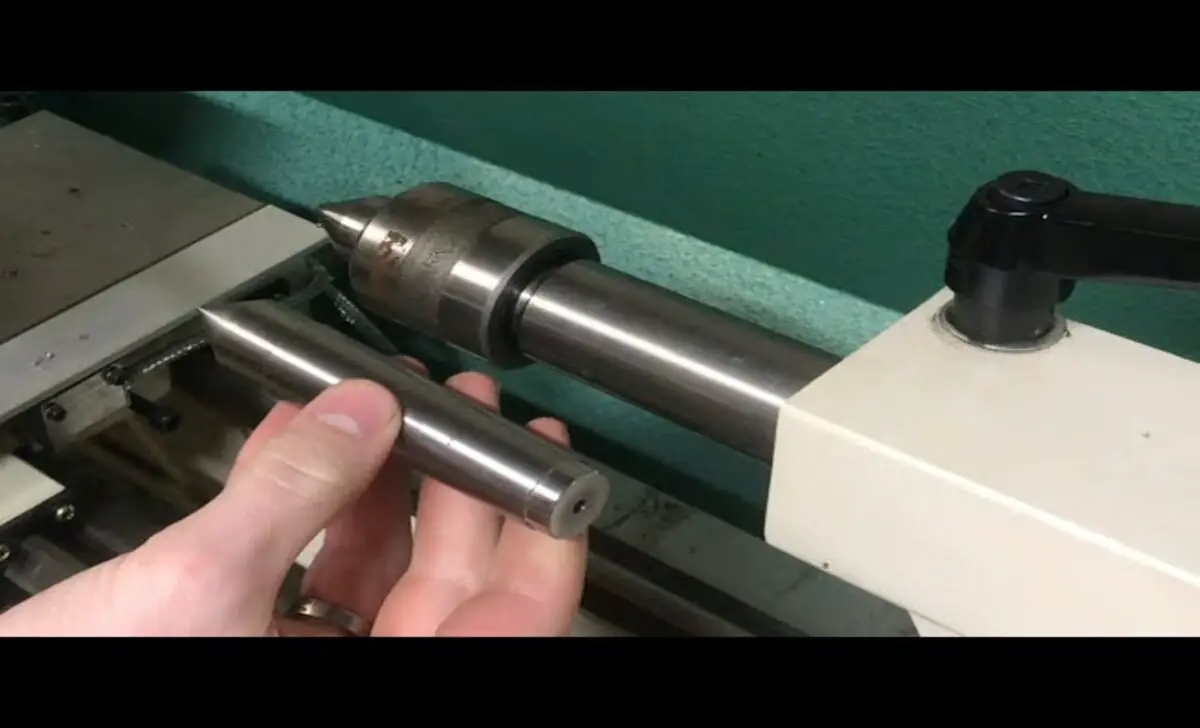
The key differences between a Lathe dead center a live center lie in their functionalities and applications. A dead center is a stationary device fixed in the tailstock of a lathe, supporting the workpiece being turned. It does not rotate with the workpiece and is handy for supporting long and heavy workpieces.
On the other hand, a live center is a revolving device that includes bearings, allowing it to rotate along with the workpiece. It supports the workpiece while also reducing friction and preventing heat buildup. People commonly use live centers for delicate workpieces or when they require higher-speed rotations.
Lathe Dead Center & Live Center Construction And Design
Lathe dead centers and live centers are both essential components in the construction and design of lathes, but they serve different functions. A dead center is a stationary component that supports the workpiece during machining operations. It typically comes with hardened steel and has a sharp point that engages with the workpiece.
In contrast, a live center is a rotating component that supports the workpiece during turning operations. It consists of a bearing assembly and a point that can rotate freely. The live center allows for better workpiece rotation and reduces friction, resulting in smoother and more precise turning operations. Both types of centers are crucial for ensuring stability and accuracy in lathe work, but their different designs and functions cater to specific machining needs.
Lathe Dead Center & Live Center Functionality And Application
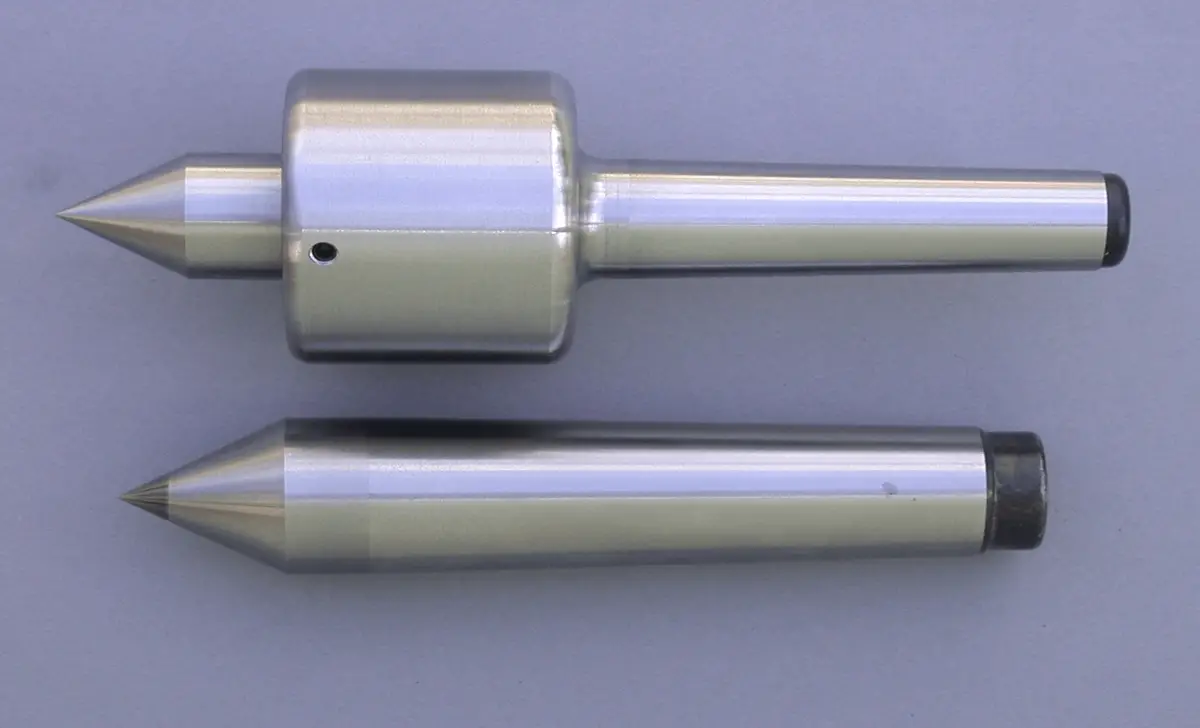
The functionality and application of a lathe dead center and live center differ in how they support the workpiece during machining. A lathe dead center is a stationary tool fixed to the lathe’s tailstock. Its primary function is to support the workpiece, ensuring it remains stable and aligned during machining.
On the other hand, a live center is a rotating tool often used in the lathe’s headstock. It provides support and rotates with the workpiece, reducing friction and heat during machining. Live centers are particularly useful when turning long or heavy workpieces.
Lathe Dead Center & Live Center Pros And Cons
Understanding the difference between a dead center and a live center is crucial when using a lathe. A dead center is a fixed center that does not rotate, while a live center is a center that rotates with the workpiece. Each type of center has its pros and cons.
Pros Dead Center:
- Provides precise and accurate centering of workpieces.
- Allows for maximum stability and support during machining operations.
- You can easily adjust and align it for different workpiece sizes and materials.
- Enables smooth and efficient rotation of the workpiece during turning operations.
Cons Dead Center:
- Requires periodic maintenance and lubrication to ensure optimal performance.
Pros of Live Center:
- Real-time interaction
- Personalized support
- Efficient issue resolution
- Enhanced collaboration
Cons of Live Center:
- Limited availability
- Potential wait times
Important Considerations When Using Dead Centers
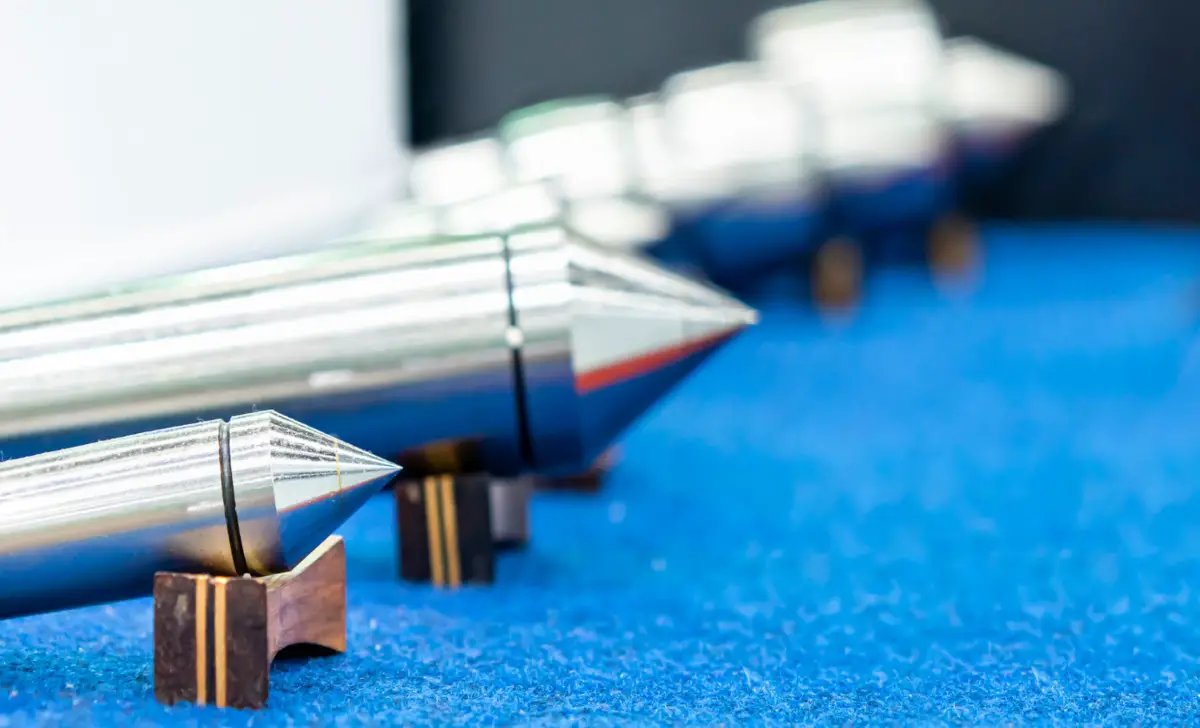
When using dead centers, it is crucial to consider several important considerations. Firstly, proper installation and alignment are essential to ensure optimal performance. This includes ensuring that the centers are correctly positioned and securely fastened.
Secondly, regular lubrication and maintenance should be carried out to prevent wear and prolong the lifespan of the centers. This involves applying suitable lubricants and cleaning any debris or buildup. Lastly, avoiding excessive pressure or heat is important, as this can lead to damage or distortion. By following these guidelines, one can maximize the effectiveness and longevity of dead centers.
Important Considerations When Using Live Centers
Regarding using live centers, there are several important considerations to remember. First and foremost, choosing the right type and size of the live center for your specific application is crucial. This will ensure optimal performance and prevent any unnecessary strain or damage.
Additionally, proper installation and alignment are key factors in ensuring the smooth operation of the live center. Carefully aligning the center with the workpiece will help maintain accuracy and prevent unwanted vibrations.
Regular lubrication and maintenance are essential to keep the live center in good working condition. Adequate lubrication will reduce friction and extend the lifespan of the center. Regular inspections and cleaning will help identify potential issues and prevent them from escalating. By considering these factors, you can ensure the effective and efficient use of live centers in your work.
Common Applications And Use Cases For Dead Centers
Dead centers are commonly handy in various applications and have many use cases. One common application is turning between centers, where the dead centers hold the workpiece in place to ensure precision and stability during the machining process. Another important use case is for heavy-duty machining operations, where the dead centers provide the necessary support and stability to withstand high cutting forces and vibrations.
Additionally, dead centers are ideal for machining long workpieces, as they help maintain alignment and prevent deflection, ensuring accurate and consistent results throughout the machining process. Dead centers play a crucial role in enhancing machining efficiency and achieving high-quality machined parts.
Common Applications And Use Cases For Live Centers
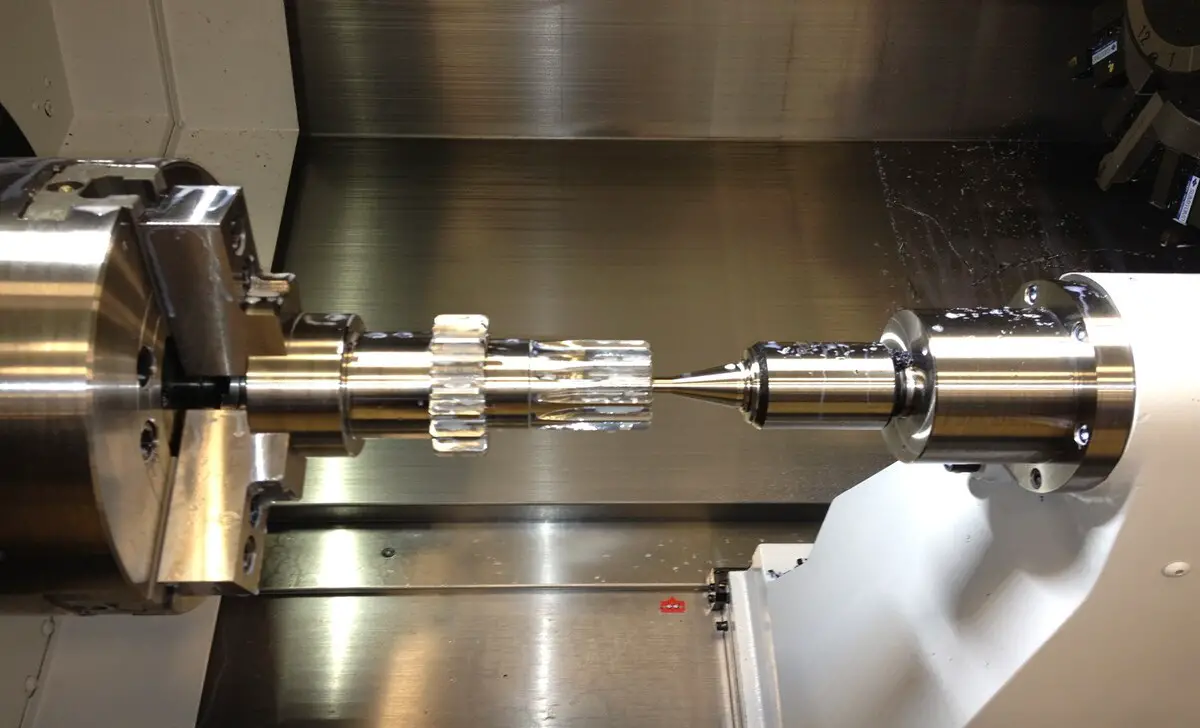
Live centers are indispensable tools in various machining operations. One of their primary applications is to support workpieces during machining processes, ensuring stability and preventing deflection. They also play a crucial role in enabling rotational movement on the tailstock, allowing for efficient and accurate machining.
Live centers are particularly useful when working with delicate or precision parts, as they provide the necessary support and control to prevent damage or inaccuracies. Whether it’s turning, milling, or drilling, live centers are essential in maintaining proper alignment and improving the overall quality of machining operations.
Conclusion
The differences between a Lathe Dead Center a Live Center may seem small, but they have a significant impact on lathe operations and the quality of work produced. While both centers support the workpiece during turning, the ability of a live center to rotate with the workpiece allows for smoother and more precise cutting.
On the other hand, a dead center requires the workpiece to be stopped and repositioned, which can lead to errors and imperfections in the final product. Ultimately, the choice between a dead center and a live center will depend on the specific needs of the project at hand. However, understanding these key differences will allow for more informed decision-making and better results.
FAQs
1.How Do I Choose A Live Center?
Ans: To choose a live center, consider the type of work you will be doing, the size of your lathe, and the weight capacity required. Look for a live center that matches the taper of your lathe spindle and one with a high-quality bearing for smooth operation.
2.What Is Meant By A Dead Center?
Ans: A dead center refers to a point or position that is fixed and immovable, typically handy in machining or turning operations. A tool or device supports a workpiece or material rotating on a lathe or milling machine.
3.Why Use A Live Center On A Lathe?
Ans: A live center is handy on a lathe to support the workpiece while it is being turned. It has specific designs
to rotate with the workpiece, reducing friction and allowing for smoother and more precise turning operations.
4.What Does A Dead Center Do?
Ans: A dead center is a tool handy in machining that helps support and rotate a workpiece during turning or milling operations. It is typically mounted on the tailstock of a lathe or a milling machine.
5.Why Is It Called Center Lathe?
Ans: People call it a center lathe because it utilizes centers or points to support and rotate the workpiece during machining. These centers are typically located at each end of the lathe’s spindle, with one serving as the driving center and the other as the tailstock center.
